Major Project Plan Introduction
Achieving an exciting colorful aesthetic is my primary objective for the final project. For all my life I’ve been drawn to colorful clothes and vibrant, mixed patterns. Wearing polka dots along with stripes and organic patterns at the same time never seemed like a clash to me, although the more conservatively-dressed farmers around me would always comment on my terrible fashion sense. It was popular in my rural home to wear blue jeans along with brown and white shirts, and if color was involved it would usually be just one color featured. And home design also featured a lack of colors mixing together, unless it was perhaps a quilt with a mixture of pastel colors, offset heavily by off-whites and browns which seemed to cleanse the palette of too much rainbow.
Now since leaving my rural home, I still notice the lack of vibrant colors in fashion, architecture, and home design. An example of this is present in HOA agreements which actually prevent you from painting your home in “tacky” colors like lime green and bright pink. Another example is the color of coats that business people wear, which are primarily black or gray so that they “go with” anything else that you are wearing.
The lack of color in Western culture has been described in detail by various authors, including Carl Jennings in his 2019 blog post:
“Color was feared and marginalized in the West for two main reasons. It spoke of the primitive, the feminine, the infantile and the pathological — it was thought of as a dangerous distraction and a corrupting influence because it appealed to the emotions rather than reason. Even Aristotle referred to color as a drug and a poison (pharmakon) Secondly, it was considered superficial, not essential. It was about adorning, deceit, and pretending. In fact, the Latin for color, celare, means to conceal or hide. It was cosmetic and fake. Why do you think they call it ‘makeup’? In short, color was suspect and dangerous.” [1]
Project Aesthetic Influences
Because I’ve had a lack of training in utilizing a multitude of colors properly in design, I’ve decided to branch out and embrace color as an aesthetic choice for my final project. In my research I have found some modern and historic design aesthetics which embrace color. For example, the hippy psychedelic arts make use of many colors together. However the focus in this type of art focuses primarily on organic designs such as “kaleidoscopic, fractal or paisley patterns.” [2]
The Pop Art design movement is another example of an art style that also features vibrant colors. However, these artworks are typically using primary colors juxtaposed together [3], while not utilizing a variety of patterns or secondary colors.
Characteristics of Indian Art & Design
I came to be inspired by the styles of Indian and Hindu fashion and arts after spending significant time traveling and working in India. Across the 12 states of India in which I have traveled over 4 years, I constantly see bold mixtures of floral patterns and geometric patterns in the same clothing piece. Multitudes of colors including complementary colors are used to paint temples. And common fashion styles make use of asymmetry in both the fabric patterns as well as the way the clothing is worn. Adornments are everywhere, such as ornate painted edgings on supply and cement trucks and colorful tassels hanging from everywhere. Yet even with all this color and texture, it is still used tastefully and with regard to color palettes that are pleasing.
For this reason I’ve decided to explore creating a final project which uses Indian and Hindu arts as inspiration. I hope to accurately capture aspects of Hindu mythology in the final piece, do justice to the type of abundant color palettes used in this area of the world, as well as use modern technology and techniques to create the patterns for this piece.
Textiles and Handicrafts in Himachal Pradesh
The tradition of textile arts is particularly rich in Himachal Pradesh, a mountainous state of India. While traveling there I was overwhelmed by the amount of crocheted and woven goods being sold around every corner. Crochet and other textile arts are also part of my cultural heritage, being passed down to me from both sides of my family. And so I explored many shops and had conversations with local artisans about their crafts.
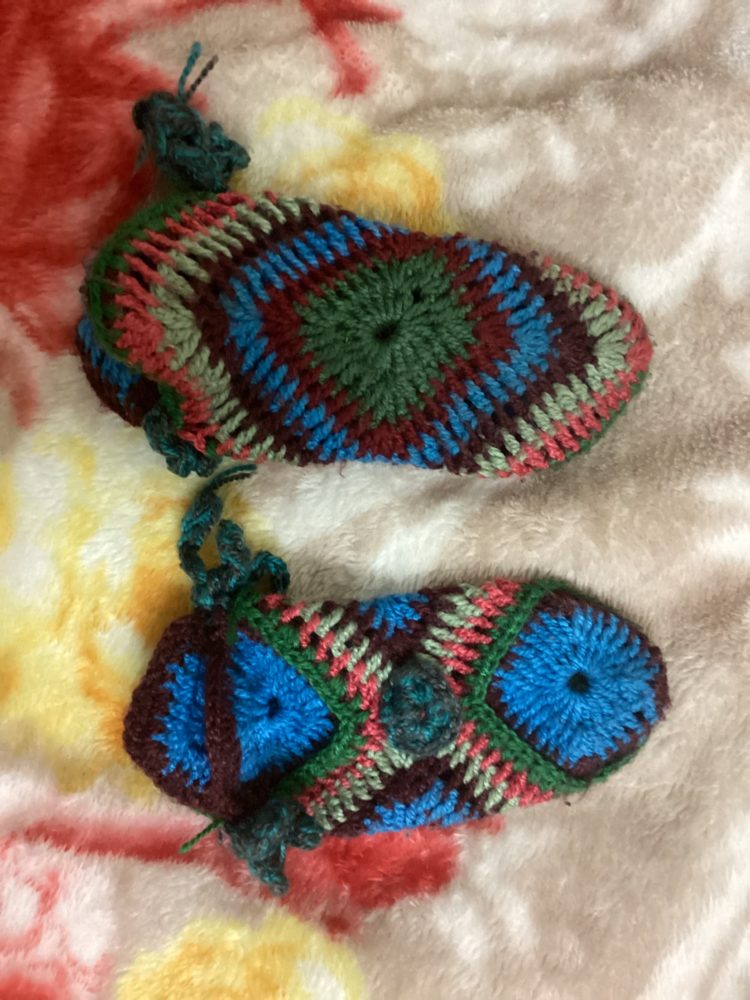
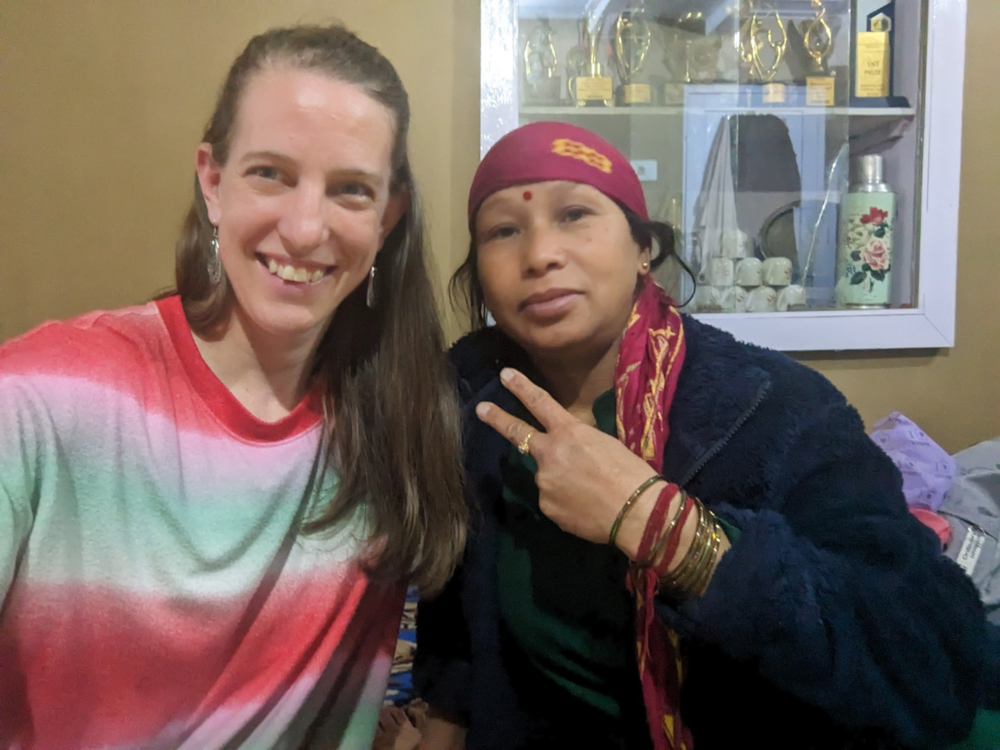
A unique pair of socks made by Kamlesh, resident and artisan from the city of Manali, and photo of us after having a breakfast of siddu made in her home.
I had already purchased some varying colors of yarn from a shop in Manali, and had my crochet hooks with me on the trip. So I asked Kamlesh if I could make her something, and she told me the exact colors she wanted in the design. She enjoyed the resulting crocheted plate cover I created, pictured below. This reinforced that I’m on the right track for the color design of this project.
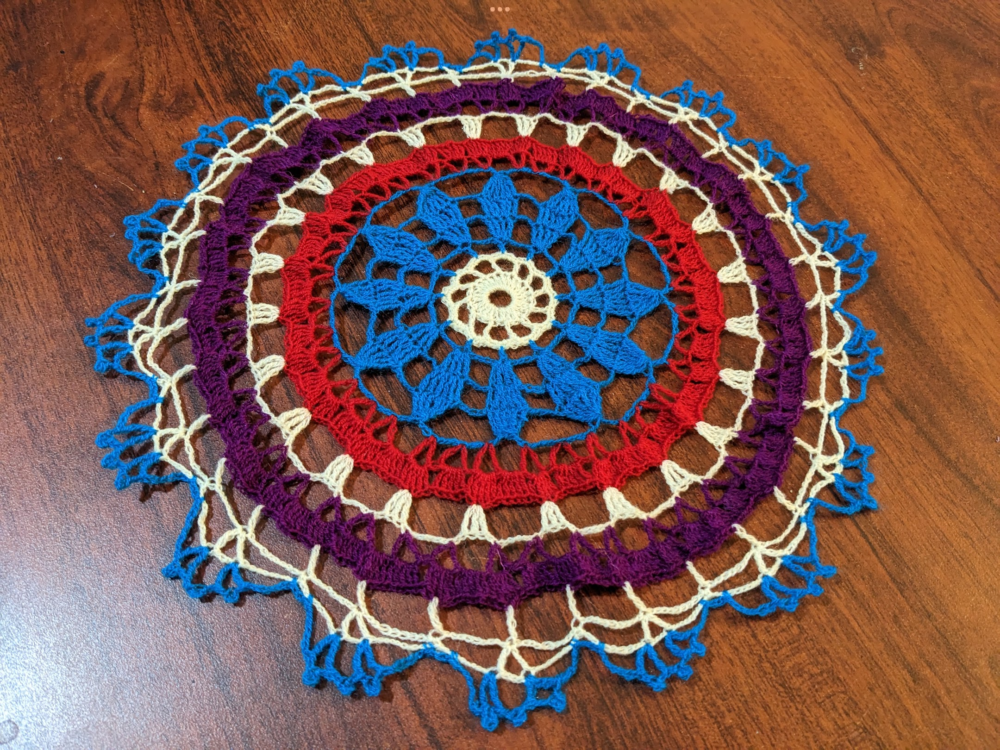
Looking for more inspiration online led me to asking ChatGPT about notable textile artists from the state of Himachel. Many of the artists sounded really interesting, including Malika Singh, who purportedly reinvigorated the textile handicraft industry in the Kullu Valley region in the 1990’s by mixing traditional patterns with modern sensibilities and establishing handicrafts again as a viable living for local people in the area. However, I was unable to find information about her or her work on the internet. And sadly I did not learn about her until after leaving the state of Himachel, so I was unable to ask locals for information.
I was able to find some work attributed to local artisan Pradeep Pillai, which showcases expert design in woven structure and exciting colors and patterns, example shown below. [4]
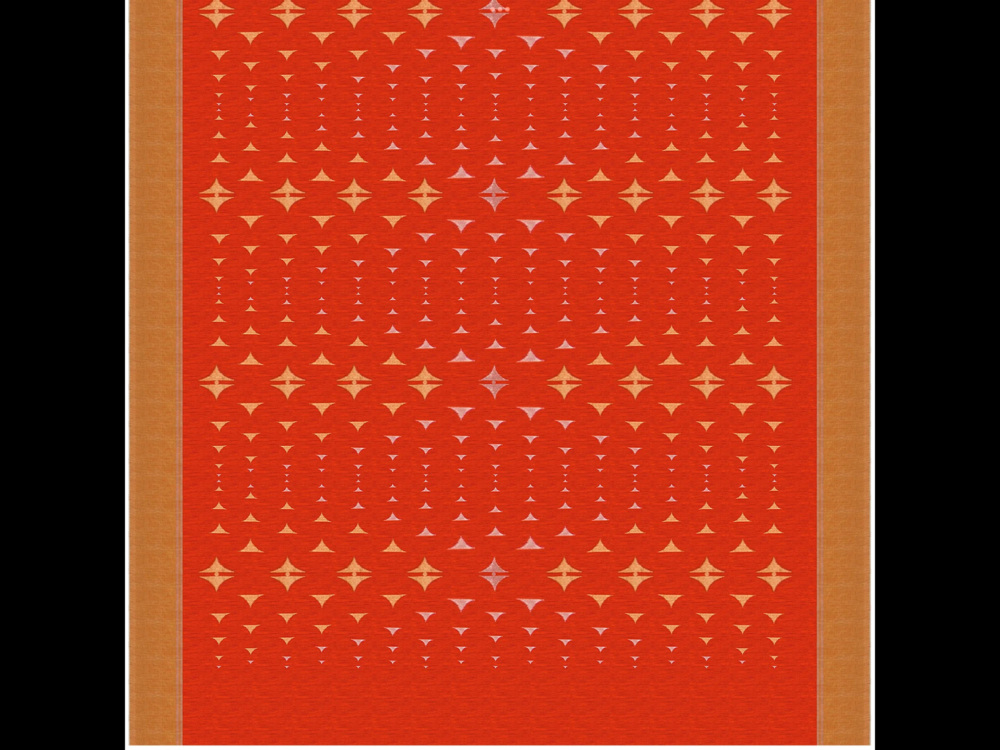
Design Process
So far I have done three things to get started on the design of my final project. First, I have located a 3d model of a peacock [5] that seemed to be a good starting point for creating the sculpture design. I imported the model into the Blender app and then added a decimate modifier in order to re-mesh the peacock model into a low-poly design. This made the model less smooth, and instead it has more visible triangles that will be easier for me to use as a pattern for the crocheted pieces.
Next, I have been collecting photos of peacocks that I have seen in my travels in India to use as inspiration for color and design style. Many Hindu Gods have peacocks as their mounts, so they are very prevalent.
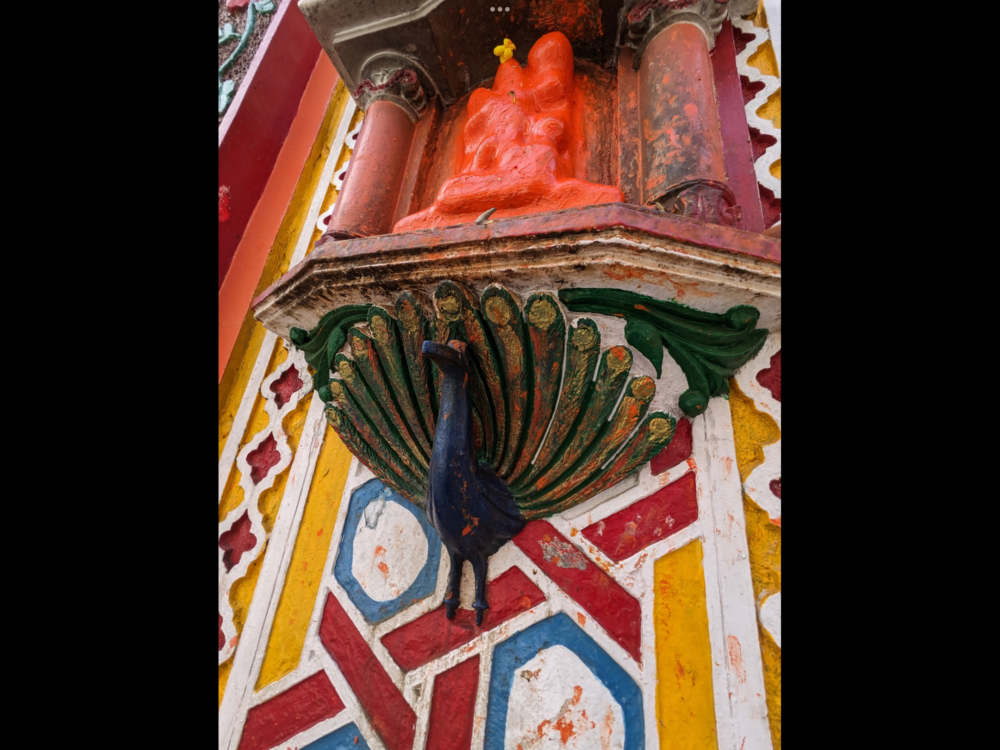
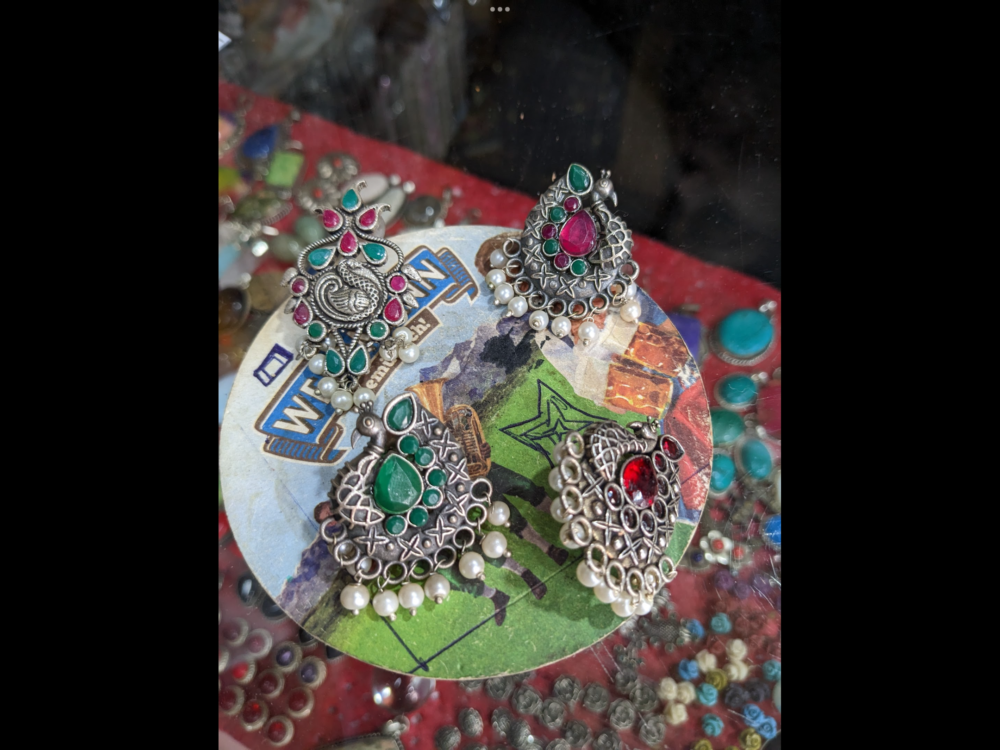
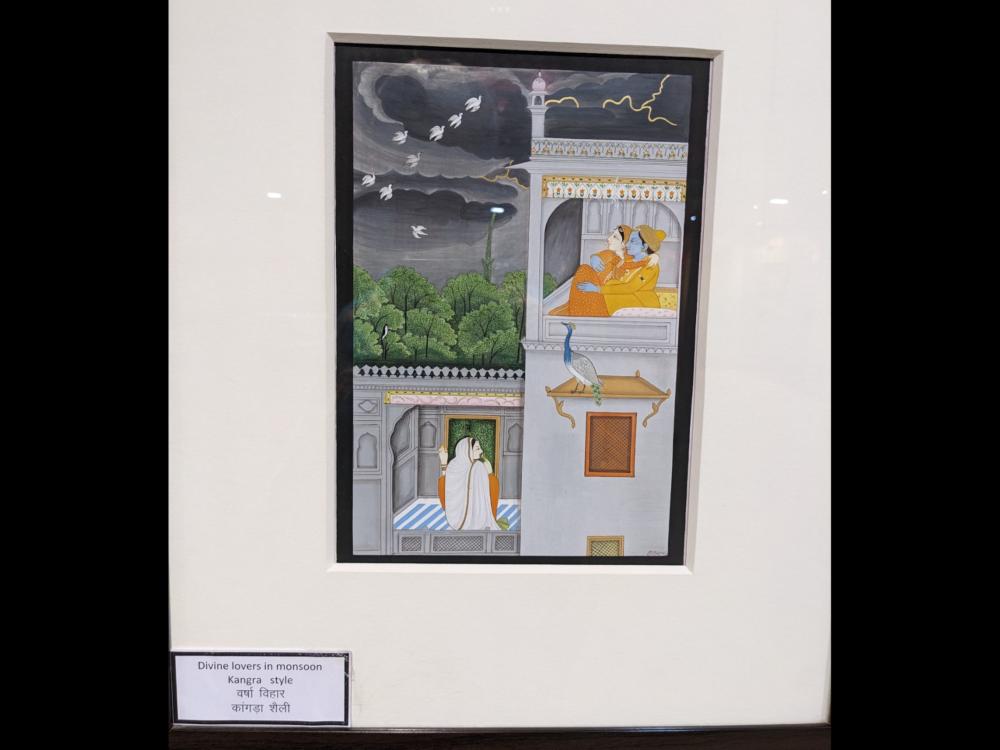
Finally, I searched for a triangle crochet pattern which would satisfy the following requirements: Equilateral triangle, maximum of 4 inches wide, easy to do in multi-colors, beautiful yet simple and fast to make, and utilizing lots of open space to cut down on crochet time. The closest I found was one pattern that fit most of the characteristics, but was slightly too big and just a little too time-consuming for each triangle. [6] So I ended up using this pattern as inspiration to design my own triangle crochet pattern. After making a few of them and experimenting with the size and shape, I have settled on a version that I’m happy with.
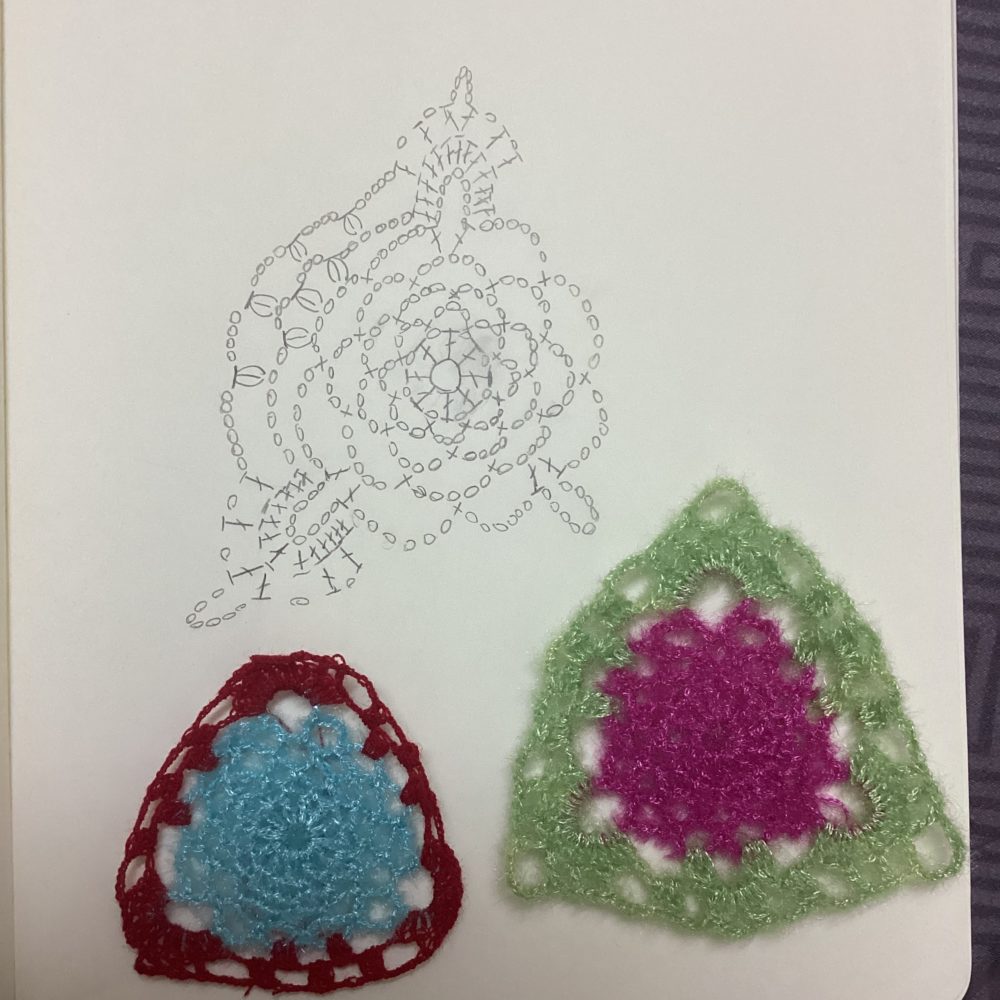
I’m looking forward to making about 150 of these in different colors for the final project! I will take some time planning which colors to use for which parts of the peacock, so that I can keep the aesthetic I’m looking for, and also prevent wasted time and yarn. After making the triangles, I will use a mixture of boiled sugar-water to starch them and lay them flat to become stiff. Then I plan to use the same combining technique shown in the unique socks above in order to sew the triangles together according to the 3d model pattern.
References
[1] https://medium.com/swlh/men-in-black-the-fear-of-color-in-western-culture-33e42a5e92c2
[2] https://en.wikipedia.org/wiki/Psychedelic_art
[3] https://www.invaluable.com/blog/what-is-pop-art/
[4] https://kanakavalli.com/products/pradeep-pillai-tussore-sari-22-008-hs002-00779
[5] https://www.thingiverse.com/thing:5027364
[6] https://www.crochetkingdom.com/category/borders-stitches-and-motifs/crochet-triangles/

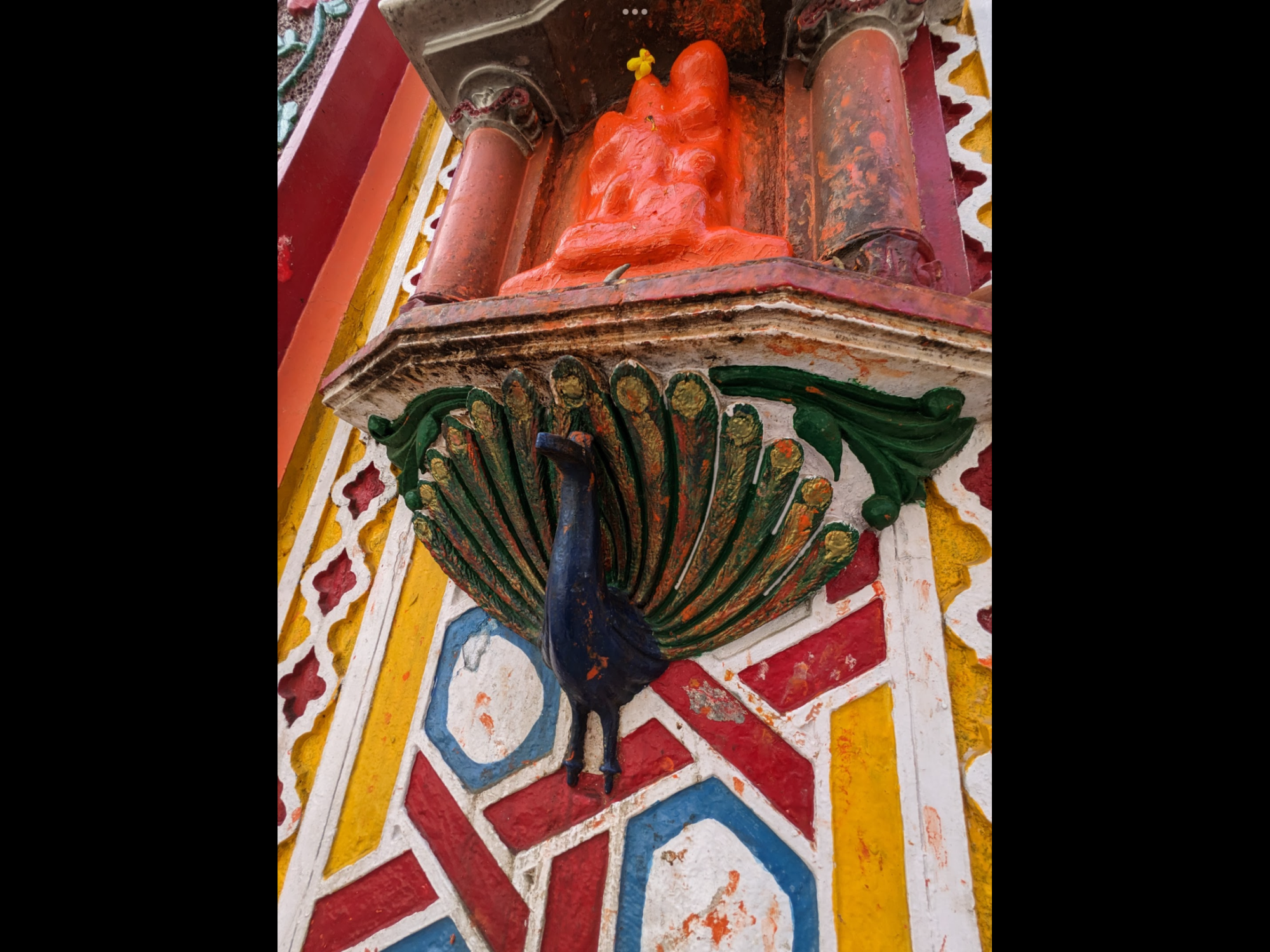
2 Comments. Leave new
Hey Bekah
I have been to the Himalayas quite a few times, the last trip was to Ladakh and the people their have a really unique culture and lifestyle with their own aesthetics as you picked out.
I really appreciate your choice for inspirations and look forward to your project.
This is a fascinating way to utilize a triangular mesh model to create a piece of art! I appreciate the value you place on color in your aesthetic and am curious it you have a specific color scheme you are aiming for in each triangle?( ie. complementary, analogous ect.)